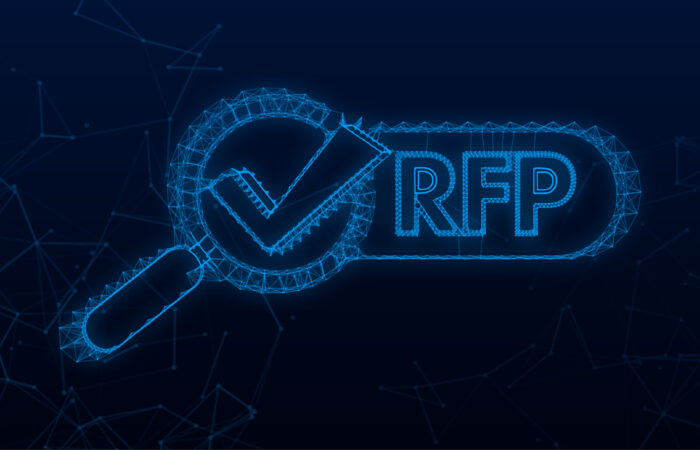New members have a secret: they secretly hope joining your association wasn’t a dumb decision that will cost them time and money.
Joining an association isn’t like other purchases. New members are taking a chance on what they hope will be a transformative experience for their career or their business. Your job during the new member’s onboarding experience is to guide them onto the path for fulfilling those desires.
An exceptional onboarding experience will make new members feel welcomed, understood, and reassured they made the right decision which helps with member retention when the time comes to renew.
In the old days, association staff gathered around the conference room table for “stuffing parties.” The membership version involved putting together welcome packets full of folders and flyers, the member directory, and the latest issue of the magazine. We ended up with paper cuts and packages so heavy we called them “door stops.”
The first thing members got from their new association was information overload. They set the package aside to read later and rediscovered it when moving out of their office.
We also subjected new members to information overload during orientation. They zoned out as we droned on and on through a benefits presentation, much of it having no relevance to the poor member.
Thankfully, we wised up. Associations developed a new perspective on the member experience and invested in technology that delivers relevant information.
Onboarding is now primarily a digital experience. Associations tailor content to the new member’s needs and interests. The onboarding campaign lasts throughout the member’s first year, so they’re never subject to information overload. The digital onboarding process also allows new members to become part of an online community so even when there’s no events going on, they feel connected.
Member journey mapping can help you understand how members feel at each point of their membership journey—from visiting your website as a prospect, to completing the application, paying dues, waiting for a response to their application, and throughout the new member onboarding process. With this understanding, you can anticipate a new member’s expectations and eliminate obstacles to their success.
You have a lot to accomplish during onboarding, so take advantage of the momentum sparked by the new member’s decision to join. You must quickly make a positive impression.
Make them the focus of your initial interactions, not you. Learn as much as you can to better understand them. Use what you learn during onboarding so the new member feels understood, finds value, and forgets about their initial concerns.
Help new members take the first steps toward becoming part of your community and feeling a sense of belonging. They can find information, education, and resources elsewhere, but your association provides all that plus community, which isn’t easy to find elsewhere. Consider appointing a current member to a community manager to make them feel right at home.
During onboarding, gradually guide new members through the resources and benefits that will help them achieve their goals. Put together some onboarding material, like a virtual welcome packet with member benefits and an upcoming event calendar to encourage them to join. Never assume they did the research and know what you’re all about. Some members labored over the decision to join, but others joined because their boss told them to.
Member engagement is the goal. But engagement looks different for each member and it can change over time. During onboarding, find out what each new member needs and wants from you now and how that might change in the near future.
During the first weeks of membership, a new member wants to know:
In her recently released book, Elevating Engagement: Uncommon Strategies for Creating a Thriving Member Community, Amanda Kaiser says new members observe at first, still weighing whether they made the right decision. Then comes assessment. They “start to layer judgment on top of their observations. Each new member is trying to determine if the association is for people like them.”
Your job during the first weeks of onboarding is to prove that, yes, they made the right decision—the association is for them. You can’t make a convincing case until you learn more about them and can speak in specifics.
If you quickly help new members get value from their membership experience, they’re likely to develop an association habit.
The centerpiece of your successful onboarding program is an automated email campaign that provides the personal touch at scale. Thanks to automation, the minute a new member joins your association, they’re automatically greeted by a welcome email and added to an onboarding campaign based on their membership type—you can further refine segmenting in the coming days.
Membership staff no longer have to run lists, upload files, enter data, and hope no one falls through the cracks. Automation takes care of onboarding tasks and helps you keep new members informed and engaged.
The more you learn about the new member, the better you can target messaging. You’ve already collected data from their membership application. Supplement that data by using interest surveys and profile updates.
Emails must be enjoyable and quick to read. Write them as if you’re talking to a friend. Focus each email on one topic and one call-to-action. The goal of each email is to encourage new members to take a small (and relevant) action.
Amanda Kaiser strongly recommends not sending one of these common welcome emails.
Learn about them so you can help them explore and get comfortable with your resources and benefits. Make each email a pleasure to read, so they continue to open them.
If onboarding is a completely digital experience, make it as personable as possible. But, if you can, recruit volunteers to serve briefly as membership buddies, coaches, or ambassadors. Buddies check in with their new member during the first few weeks of membership to answer questions, learn more about them, and make suggestions for things to read, watch, attend, and do.
New supplier members are a different case. It’s best for them to receive the personal touch from business development or corporate partnership staff. Learn about the new member’s expectations, marketing goals, product/service, target market, and expertise they could share via sponsored content, speaking, and other volunteer activities.
On your membership site, create a page for each membership type, tier, or broad segment. For example, core and supplier members have different goals and are interested in different benefits.
An early-career member page could highlight your career center, young professional groups, career development programs, and early-career online learning programs and certificate/digital badge programs.
On each page, an Actions section (as illustrated below) encourages new members to take simple next steps in their membership journey.
Orientation sessions should be a mix of networking and information. The primary goal is for new members to meet each other and to interact with membership buddies. Instead of a presentation, focus the discussion on membership goals, work challenges, and interests—what many of them have in common. Encourage membership buddies to offer advice on finding resources and building relationships.
Invite first-year members to attend as many orientation sessions as they wish. Schedule additional meetups where new and veteran members can share their membership advice and experiences. Invite new supplier members to exclusive meetups where they can learn membership best practices from veteran suppliers and regular members.
Share a list of new members in your newsletters, online community, and social platforms once or twice a month, depending on volume. Encourage existing members to extend a personal welcome, especially to those they know, and to provide membership tips and advice.
At in-person events, give new members a special ribbon or badge color. During meals, if you ask them to stand for a moment, the entire table has a conversation starter.
When your AMS allows you to automate the new member onboarding experience, you and your volunteers have more time to provide the human touch. During and at the end of onboarding, call or email new members to ask for their feedback on the onboarding experience. This outreach lets them know you care about their opinion and membership experience.
At the end of their first year, invite them to serve as a membership buddy—a microvolunteering assignment that could be the first step to deeper involvement.
“Creating exceptional experiences is the key to capturing our members’ hearts and then minds,” says Amanda Kaiser. An exceptional onboarding experience will help your association build emotional connections with new members and help them build those same connections with other members.

Impexium’s AMS software empowers associations to make better decisions, execute with precision, and delight their members. Demo our solution today!
“You have to have a support team that communicates clearly, is a good listener, is patient and can really handle the problem solving…I have been really pleased with Impexium’s support. They are on-top-of things responsive…I know they will stick with me until we figure it out.”

“I like the fact that by using Impexium versus our previous system, we will be able to reduce staff’s workload. As a result, NAADAC’s staff will be happy, feel more capable and competent…in serving our members.”

“We wanted a partner that would grow with us and one that could innovate with us. Impexium checked all those boxes. They took us from outdated to automated.”

“…very excited because of the possibilities that I see for NADA moving forward, the ability to give our executives the information, any intelligence that they need in order to help our members better…the ability to simplify the whole application ecosystem, removing unbelievable complexity and bringing simplicity to the application.”

“…Impexium has allowed us to significantly improve our processes and procedures. We’ve automated quite a lot with Impexium and removed a number of manual processes that we had before. And staff are very happy about that.”

“I found Impexium to be more modern, more sophisticated, more user friendly, more intuitive.”

Trade associations, professional societies, and non-profits of all sizes have transformed their businesses and exceeded member expectations with Impexium’s membership management software. Request a personalized demo today.




